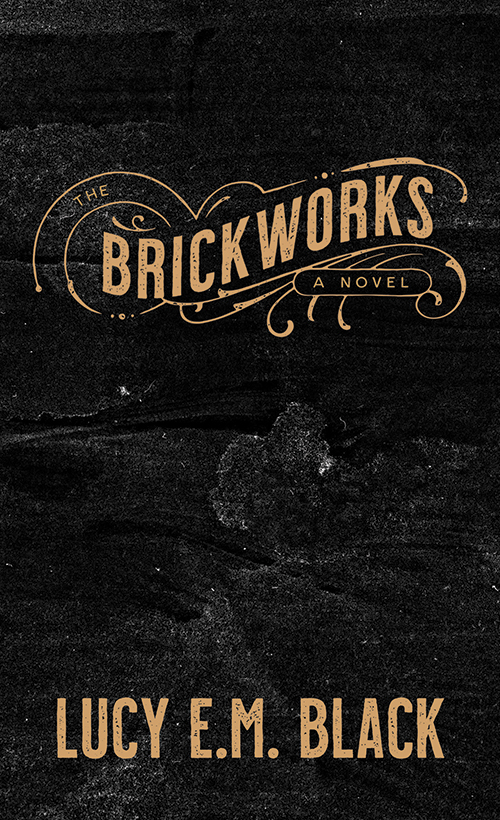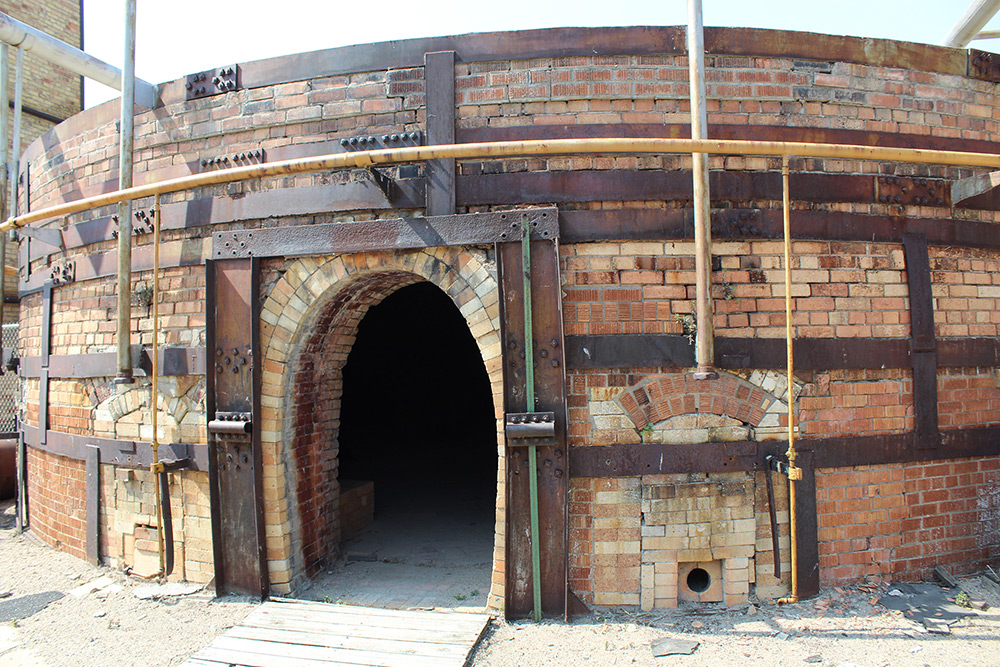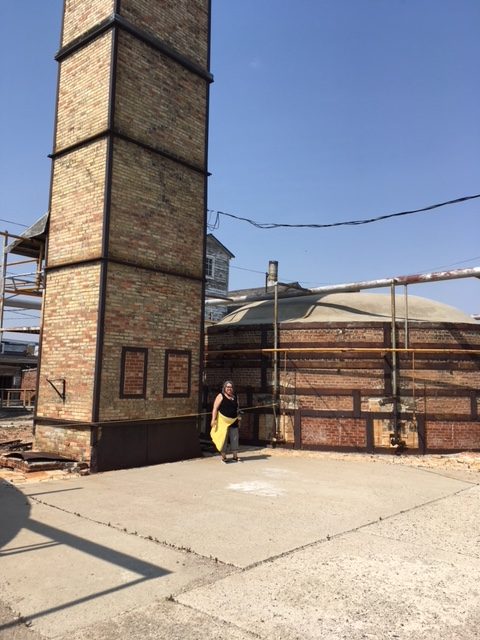
The Brickworks
Overview:
In 1879, the Tay Bridge disaster in Scotland was a shocking event of international significance. At nearly two miles long, it was at the time, among the longest structures of its kind. The bridge’s failure represented a major blow to Victorian engineering. The Brickworks starts with the collapse of the Tay Bridge and the repercussions of the catastrophe. The manuscript demonstrates the contemporaneous sense of globalization and possibility that took place at the turn of the twentieth century. Central to the work is a cautionary tale about the effects of industrialization on both the landscape and the lives of those for whom it initially held such potential. The manuscript explores transition in terms of dislocation, promise and cost.
Summary:
The story begins in 1879, with the bridge’s collapse and the immediate aftermath of the event when the driver of the train was deemed negligent and blamed for the catastrophe. The story continues with a fictionalized account of the plight of his widow and their son who were socially ostracized. The boy, Brodie Smith, eventually sets out to seek his fortune and is taken in by a kindly uncle in Edinburgh. The uncle sees much potential in Brodie and sends him to university. Brodie becomes a civil engineer, determined to set right the historical account of his father’s role in the events at Tay Bridge.
Leaving Scotland to continue his education in Boston, Brodie eventually makes his way to the 1901 World Fair in Buffalo. He is inspired by the innovation taking place in Buffalo and accepts a job in a steel factory, where he designs and oversees the installation of railway bridges. There, Brodie meets another Scot, Alistair Lamont. Alistair grew up in a brickworks in the Scottish Borders and hopes to save enough money to start his own brick-making factory. The two men share a love of the outdoors and while on holiday in Canada for some salmon fishing, see the potential for a joint venture of their own.
Brodie and Alistair purchase land fronting a river with large clay and shale deposits. They return to Buffalo and find that a group of steel barons are willing to become silent partners and invest in the proposed brickworks project. The friends hire local men and set up the undertaking which begins primitively while they source the resources and technology needed to make it increasingly efficient.
During this time, Alistair falls for a Buffalo socialite and the daughter of one of their wealthy backers. Although Violet Lewis has been gently reared as part of the Buffalo elite, she takes an interest in Alistair and makes it very clear that she wishes to encourage him. Brodie discourages this alliance, fearful that his friend will never be able to provide her with the lifestyle into which she was born. Shortly thereafter, Brodie himself is drawn to Charlotte Gowan, a widow in the village where the brickworks has been established. After an abbreviated courtship, they marry.
As the brickworks continues to expand, a number of catastrophic events take place, including accidents resulting in fatalities. Alistair and Brodie continue to navigate each of these occurrences, as they endeavour to steer the course for their own success. Both men feel a sense of responsibility for their workers and attempt, at personal cost, to always do the right thing for both their growing business as well as for those whose livelihoods depend upon it. In this context, the manuscript provides a lively, humorous but often tragic account of an age when progress and industrialization allowed for new possibilities.


Discussion Questions
In 1879, the Tay Bridge disaster in Scotland was a shocking event of international significance. At nearly two miles long, it was at the time, among the longest structures of its kind. The bridge’s failure represented a major blow to Victorian engineering. The Brickworks starts with the collapse of the Tay Bridge and the repercussions of the catastrophe. The manuscript demonstrates the contemporaneous sense of globalization and possibility that took place at the turn of the twentieth century. Central to the work is a cautionary tale about the effects of industrialization on both the landscape and the lives of those for whom it initially held such potential. The manuscript explores transition in terms of dislocation, promise and cost.
- Brodie is entrepreneurial and resilient and has a number of adventures before he settles in Braemor. He evolves a great deal as the story unfolds. How does his character development affect your feelings for him? Does his evolution make sense to you in terms of the age in which he lives?
- Alistair is determined and ambitious. His friendship with Brodie is central to the novel. How does Alistair’s nature affect the relationship between the two men and the major events in the novel? How do you respond to Alistair? Is he someone you would want as a friend?
- Charlotte is a hard-working, good-natured widow who has had a difficult life. What is her role in the novel? Can you identify with any aspect of her life? Do her responses to grief feel real and convincing?
- If you were asked to state the central theme of the novel to someone who had not read the book, what would you say?
- There is a contrast between the lives of the steel barons in Buffalo to those who live and work in Braemor and surround. In previous periods, a Novel of Manners was a term that was often used for books that drew the reader’s attention to the conversations, social customs, and ideologies of various classes or groups in society. Does the novel capture the essence of such distinctions?
- There are several catastrophic events in the novel. How realistic did these seem to you? Did any of them resonate with you? Did they make you reflect upon larger themes or issues? Explain.
- The Tay Bridge disaster is central to the novel. How do the events at Tay Bridge inform the narrative?
- Brickmaking, bridge-building, and building a life in general, are key components in the novel. Comment upon the aspect of building and some of the inherent risks involved.
- Rather than remain in the comfort of Buffalo society, Violet actively encourages and pursues Alistair. Did this surprise you? What do you think of Violet?
- Brodie takes Charlie to Scotland and plans, potentially, to remain there for some time. Did this decision surprise you?
- A great deal of research forms the underpinning of this novel. Can you identify the ways in which the history has contributed to the novel?
- Can you choose a character that spoke to you or stayed with you after you closed the book? Who was it and why did they linger?
Endorsements
The Brickworks is an entertaining glimpse of life in the burgeoning industrial age of late 19th-century Ontario and New York. As an archaeologist who has studied 19th-century brickmaking sites in Ontario, I was delighted by Lucy E.M. Black’s detailed descriptions and accurate portrayal of the industrial brick-making process, the innovative machinery for mass production, and its impact on the people who toiled to turn clay into building material. The hardships of such entrepreneurial endeavors, the passion and drive to make them happen, and the engineering know-how are all vividly and meticulously depicted in this enchanting read.
-Gregory Pugh, MA
Senior Archaeologist, ASI Heritage
Wonderfully researched and lovingly told, Black again pulls the curtain back on lesser explored moments in history weaving a compassionate tapestry of determination, innovation and love that fits well into the tradition of beloved national storytellers Michael Ondaatje and Genevieve Graham.
– Rachel McMillan, author of, The London Restoration and The Mozart Code
Lucy E.M. Black’s affection for her characters shines through on every page. The intricacies of friendship and love are beautifully woven throughout. The Brickworks is a charming journey into the turn of the twentieth century, with unexpected twists that will leave you with a smile on your face and an insatiable craving for pie.
-Crystal Fletcher, author of, Beauty Beneath the Banyan
Immersive and masterfully written, The Brickworks by Lucy E.M. Black opens a portal to a past that thrums with immediacy. Black’s attention to detail is exquisite. She deftly envelops us in the lives of Alistair and Brodie, two Scotsmen who find themselves in Canada at the turn of the twentieth century and are brought together by their resolve to forge their own paths in a world determined to keep people in their place. A stunning, riveting read!
-Hollay Ghadery, author of, FUSE, and Rebellion Box
Lucy E.M. Black’s beautifully crafted prose and rich historical detail vividly transport you to Canada at the turn of the twentieth century, engulfing you in the struggles of two pioneering Scottish immigrants. The pair rely on gumption and each other as they rise above their tumultuous pasts to embark on the difficult and dangerous venture of establishing a Brickworks in an isolated community. Encompassing love and loss, hope and despair, friendship and betrayal, The Brickworks takes you on an unforgettable journey.
-H&A Christensen, authors of Stealing John Hancock
Lucy E. M. Black’s The Brickworks is an engaging, enlightening, impeccably researched look at turn-of-the-twentieth-century industrial craftsmanship. With crisp dialogue and a sharp eye for historical detail at the personal, human level, Black has created a compelling world of ambitions and setbacks, tragedies and redemptions, and the sustaining power of community.
-K. R. Wilson, author of An Idea About My Dead Uncle and Call Me Stan: A Tragedy in Three Millennia
At a time when so many writers are venturing into the genre of historical fiction while displaying so little effort applied to historical research, it is refreshing to encounter a novel that is meticulously researched while being so entertainingly presented.
In The Brickworks Lucy E.M. Black has presented us with characters, their personalities, their language and technology and the events that surround them, all flawlessly accurate and plausibly set in the late nineteenth and early twentieth century. As the setting weaves seamlessly from Scotland, to Ontario and then New York State, the development of the story and characters is contextually and chronologically accurate and highly entertaining. With this novel, Black has placed herself firmly among the most capable of Canadian writers of historical fiction. I am anxiously waiting to read more of her work.
-Paul Arculus, writer and historian.
Best selling author Donna Morrissey says of Black’s previous novels: Black is a natural storyteller… (Eleanor Courtown) is rich in its grasp of character, its genuine understanding of period, place and the language of the time; the story is both rich and satisfying.
Of her first book of short stories (The Marzipan Fruit Basket), Donna Morrissey says Lucy E.M. Black arrives into the world of Can Lit with this compilation of beautifully written short stories that speak to the heartfelt intimacies of both her characters and her readers.
Stella’s Carpet is a treat – a multinational, multigenerational gem of a novel about family, loss and the ties that bind. Lucy Black writes with heart, verve… and oodles of talent.
–Brad Smith, award-winning author of Copperhead Road, The Return of Kid Cooper, The Goliath Run, Cactus Jack and One-Eyed Jacks
